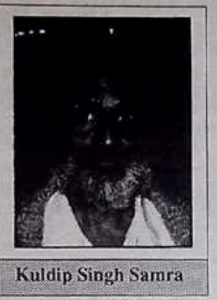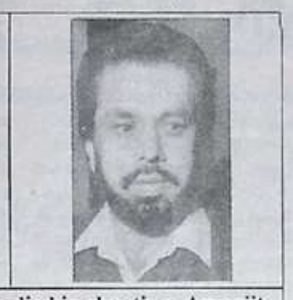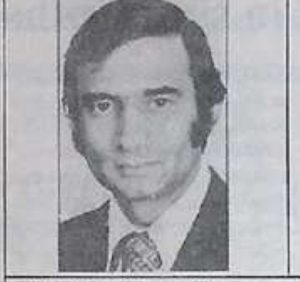


Kuldip Singh Samra has begun serving a life sentence with no chance of parole for at least 25 years for killing two men in a Toronto courtroom more than a decade ago.
“He got what he deserved,” said Amarjit Tatla, who survived the shooting but was left paralyzed.
With her sons Supporting her, Regime Fonseca, widow of shooting victim Oscar Fonseca said: ‘We are relieved that it’s (the 10week trial) Come to a close and justice has been done, “It doesn’t give us back…!she said before breaking into tears, unable to finish the sentence.
Bhupinder Pannu was also killed in the shootings at Osgoode Hall on March 18. 1982.
A jury in Ontario Court, general division, deliberated for nearly 13 hours over two days before finding Samra 47, guilty as charged of two counts of first degree murder and one of alimented murder.
The shootings took place immediately after a judge ruled against Samira in a civil case arising from a dispute over elections at a Sikh Temple. Tatla and Pannu were on the other side of the dispute and Fonseca was their lawyer.
After the shootings, Samra fled to India. He was eventually arrested there and returned to Canada for trail.
Samra displayed no emotion when the jury foreman read out the verdicts yesterday; it was a similar state of calm to the one he showed in April 1992, as he was returning to Canada after surrendering to two Metro police detectives in India. “Lm ready to face the music,” he. Told a reporter at the time, in an interview at the airport in Zurich, Switzerland. A gaunt Samra said he had been on the run long enough and “should have faced justice” in Canada a long time ago. His sudden return to Toronto one early 20 months ago—and 10 years after the slayings — caught the city and many members of the Sikh community by surprise.
They steeled themselves to confront and dredge up painful memories surrounding the politics and practices of the Shromani Sikh Society temple on Pape Ave. — the first major Sikh gurdwara, or temple, in the Metro area.
The shootings —at about 3 p.m. on March 18, 1982—were shocking, not just because two people had been Killed and a third maimed, but also because the location made it seem a direct attack on the country’s judicial heart.
The massive manhunt for Samra put the city’s burgeoning Sikh community in an uncomfortable spotlight at a time it was fighting for acceptance.
It was also difficult to understand how a small conflict about aman trying to overtime allegedly rigged elections at a small Sikh temple on Pape Ave. just south of Gerard St. E, could result in so much blood shed and pain.
Samra had an “undying hatred” for those who opposed him and when the ruling in the civil case went against him, he “turned a courtroom into a shooting gallery… charnel house,” Crown Attomey Uriel Priwes had told the jury of nine women and three men. “The crown contended Samra had secretly taken a gun into the court room, knowing he would probably lose, It also argued he had indicated he would take over the temple by force if necessary.
He explained his compulsive involvement in community affairs by telling the court he wanted to become a saint who could one day return to India to help his people.
“I felt someday I was going to go to India and make 8 social reformations. If Mohandas Gandhi can change things without bloodshed, 1 could make a difference,” he said.
Winning the hearts of the South Asian community in Canada became an important step toward his goal of becoming a saint in his homeland. Samra said his immersion in the life of a community activist led his Wife (through an arranged marriage) to ask for a divorce. His debts were steadily increasing, as was his drinking and he often spent many nights away from his home and two young children, he said.
When he first arrived in the courtroom the day of the shooting, Samra said he had intended to resolve the dispute out of court, as suggested by Mr. Justice John Osler. He planned to do so if his opponents swore on the Sikh holy book that there were no irregularities in voting for the female’s leadership. Samra also said he was shocked when he arrived in court and heard me affidavit of Tatla, who had been his closest friend.
“It didn’t believe my cars, what | was listening to. It was just lies,” Samra said during the murder trial.
“I felt terribly betrayed. This is what! Get for all these years of good service. I have no way out of this but to die. | was dragged into a dark hole,” Samra said wringing his hands.
He went to his car, where he got a 457 magnum gun he had taken from a protester who had threatened to kill himself during a rally in the summer of 1981. The 198] incident was confirmed in court. Samra said he decided to return to the courtroom and Kill himself in front of his betrayers in order to make a statement.
“I just blowup, my heart came, out, of my brain. 1 was going to pieces. | went black,” Samra wept. Others said he walked clockwise around the room and shot Fonseca, $1, the lawyer for those opposing his motion, as well as Pannu, 31 and Tatla. Pannu died and Tatla, now 46, was paralyzed from the chest down.
Samira said that when he fled me Courtroom, he rejected a plan to kill himself by jumping in front of a subway train. “What if my legs are cut? That would be real hell living all your life with no legs,” he said he rationalized. A friend took him to Montreal. But he couldn’t find shelter there, so he went to Vancouver. He then travelled through the United States and managed to get to Mexico. From Mexico, he flew to India on April 26, 1982, to spend the “most horrible and miserable years.” Defence psychologist Alan Long testified that Samra was a genius, obsessed with social and political recognition, who exploded. Crown psychiatrist, Dr. Andrew Malcolm, said Samra took advantage of others and showed fettle empathy for those he killed and maimed.
When Crown Attomey Warren Thompson asked how he felt about the shooting, Tatla replied: “If one of your best friends can do this to you, leave you disabled for life, what is there to feel?”
Article extracted from this publication >> December 24, 1993